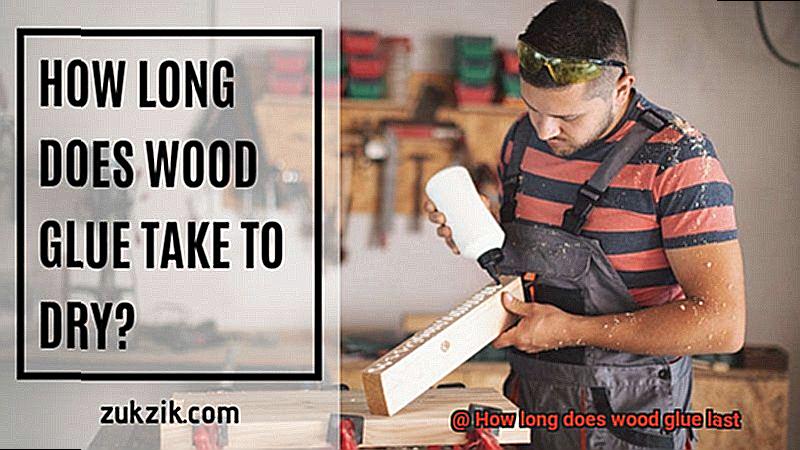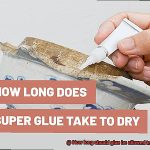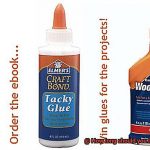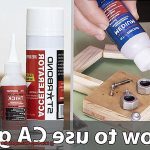Today, we’re tackling a question that has surely left many DIY enthusiasts scratching their heads: “How long does wood glue last?” Get ready to uncover the secrets behind this magical adhesive as we delve into its shelf life, usability, and durability.
So, grab your favorite mug filled with steaming coffee and let’s embark on an adventure through time and bonding agents as we unravel the mysteries of how long wood glue can truly hold our wooden creations together.
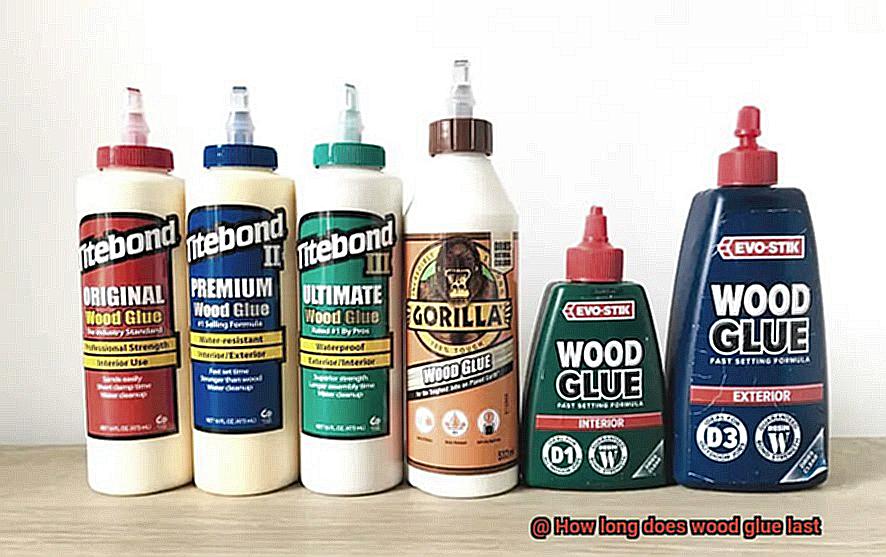
Types of Wood Glue
Contents
Wood glue, also known as carpenter’s glue or carpenter’s adhesive, is an essential tool for any woodworking project. It is a strong adhesive that is specifically formulated for bonding wood together. There are several types of wood glue available in the market, each with its own unique characteristics and uses.
PVA Glue:
Polyvinyl acetate or PVA glue is the most common type of wood glue available in the market. It is a water-based adhesive that is easy to use and dries clear. PVA glue has a relatively fast drying time and provides a strong bond between wood surfaces. It is suitable for a wide range of woodworking applications, including joinery, cabinetry, and furniture making.
Advantages:
- Easy to use and clean up with water.
- Dries clear, making it suitable for visible joints.
- Fast drying time allows for quicker project completion.
- Provides a strong bond between wood surfaces.
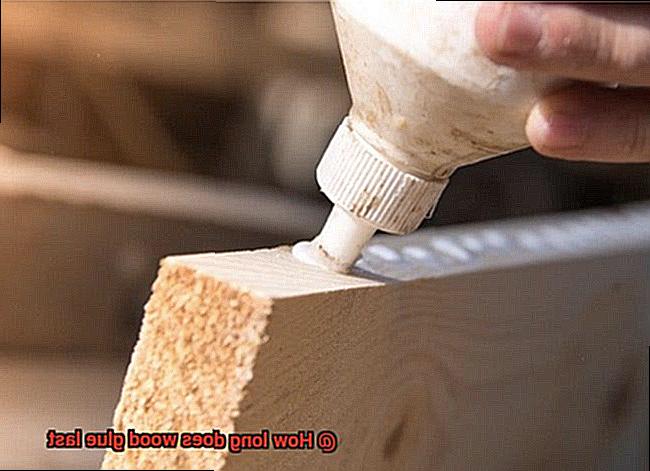
Considerations:
- Not waterproof, so it is not suitable for outdoor applications.
- Can become brittle over time.
- May not be as strong as other types of wood glue.
Polyurethane Glue:
Polyurethane glue is a versatile adhesive that works well on both porous and non-porous materials, including wood. It forms a strong bond that is resistant to water, heat, and chemicals. Polyurethane glue expands as it cures, filling gaps and creating a strong bond. It has a longer drying time compared to PVA glue but offers excellent strength and durability.
Advantages:
- Provides a strong bond that is resistant to water, heat, and chemicals.
- Can be used on both porous and non-porous materials.
– Expands as it cures, filling gaps and creating a tight bond.
- Offers excellent strength and durability.
Considerations:
- Longer drying time compared to PVA glue.
- Can be messy to work with due to its expanding properties.
- Can leave a foam residue that needs to be cleaned up.
Epoxy Glue:
Epoxy glue is a two-part adhesive that consists of a resin and a hardener that need to be mixed together before application. It provides an incredibly strong bond and is known for its exceptional durability and resistance to moisture, chemicals, and heat. Epoxy glue has a longer curing time but offers superior strength, making it ideal for heavy-duty woodworking projects.
Advantages:
- Provides an incredibly strong bond.
Considerations:
- Longer curing time compared to other types of wood glue.
- Requires precise mixing of the resin and hardener.
Hide Glue:
Hide glue, also known as animal glue or traditional glue, has been used in woodworking for centuries. It is derived from animal collagen and is available in both liquid and dry form. Hide glue requires heating before application and provides a strong bond that can be easily reversed by applying heat again. It is commonly used in antique furniture restoration or for creating traditional woodworking joints.
Advantages:
- Provides a strong bond that can be easily reversed.
- Suitable for antique furniture restoration.
- Can be used for traditional woodworking joints.
Considerations:
- Requires heating before application.
- Not suitable for outdoor applications as it is not waterproof.
- Limited shelf life compared to other types of wood glue.
Cyanoacrylate Glue:
Cyanoacrylate glue, often referred to as super glue, is a fast-acting adhesive that bonds quickly and securely. It is suitable for bonding small wood components or for repairing cracks and splits in wood. Cyanoacrylate glue is available in various viscosities, allowing for different application methods and bond strengths.
Advantages:
- Bonds quickly and securely.
Shelf Life of Wood Glue
Wood glue, like any other adhesive, has a limited shelf life. This refers to the period during which the glue remains usable and effective for bonding wood surfaces. Understanding the shelf life of wood glue is crucial to ensure its effectiveness and reliability.
The shelf life of wood glue can vary depending on several factors, including the type of glue and storage conditions. Most commonly used wood glues, such as PVA (polyvinyl acetate) glues, have a general shelf life of around one to two years when stored properly. However, it is important to note that different brands or variations of wood glue may have slightly different shelf lives.
Proper storage is essential for prolonging the shelf life of wood glue. Here are some tips to keep in mind:
- Temperature: Wood glue should be stored in a cool and dry place, away from direct sunlight and extreme temperatures. Excessive heat or cold can accelerate the deterioration of the glue, reducing its effectiveness.
- Sealing: Keep the bottle tightly sealed when not in use. Air exposure can lead to premature degradation of the glue. Wipe off any excess glue from the nozzle and cap before sealing it.
- Contamination: Foreign substances, such as dust or wood particles, can introduce moisture or impurities that compromise the adhesive properties of the glue. To prevent contamination, keep the nozzle clean and avoid touching it directly to surfaces that may carry debris.
- Consistency: Over time, wood glue can thicken or become lumpy, indicating that it may have expired or deteriorated. If the glue appears stringy or clumpy instead of smooth and flowy, it is best to discard it and use a fresh batch.
- Specialty Glues: Some specialty wood glues, such as epoxy adhesives, may have a longer shelf life compared to standard PVA glues. Epoxy glues typically come in two parts that need to be mixed before application. These types of glues often have a longer shelf life, ranging from one to five years, depending on the brand and formulation.
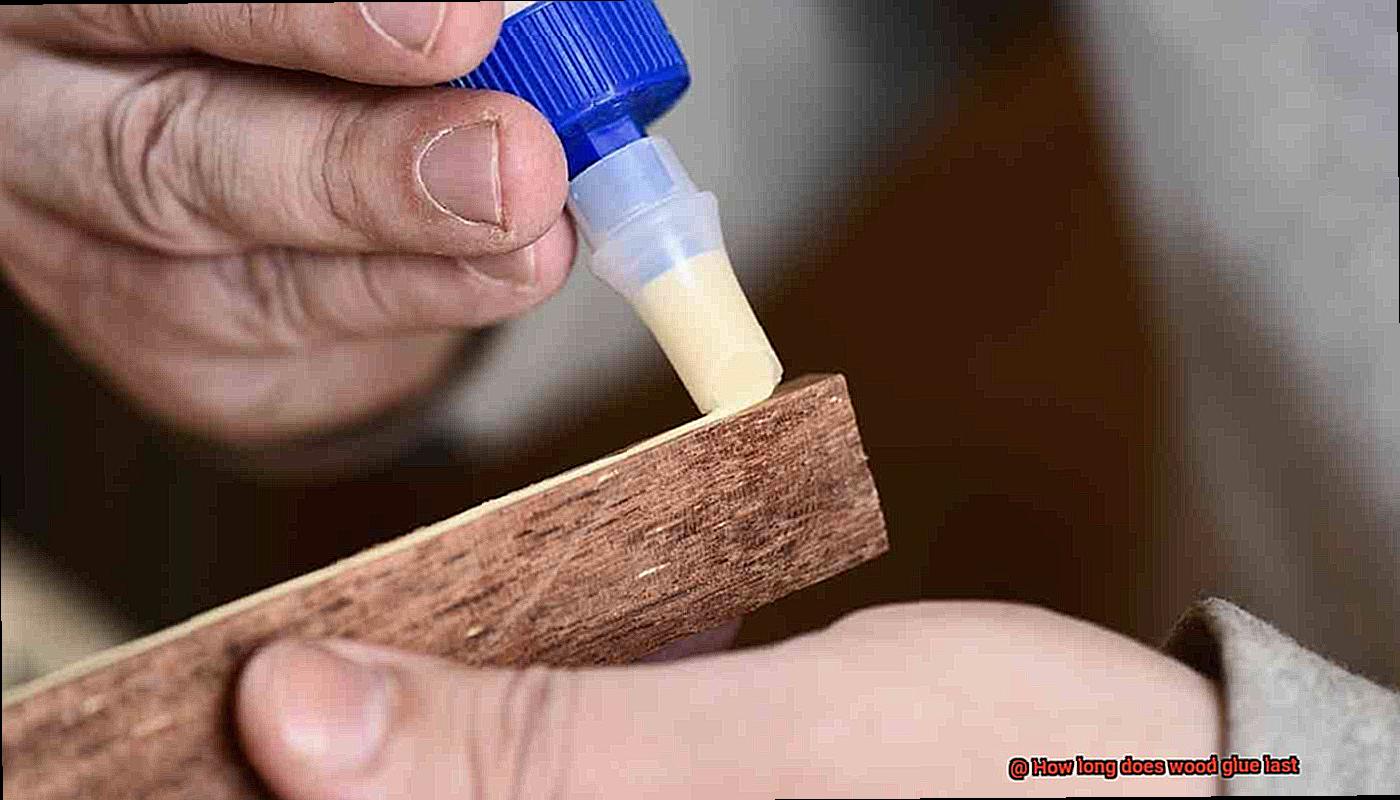
Drying Time of Wood Glue
When it comes to the drying time of wood glue, it’s not a one-size-fits-all answer. The drying time can vary depending on several factors. Let’s dive into the details:
- Type of glue: Different types of wood glue have different drying times. Some quick-setting glues can dry within 30 minutes, while others may take several hours or even overnight to fully cure. It’s crucial to check the manufacturer’s instructions for specific drying times when using a particular type of wood glue.
- Temperature and humidity: Environmental conditions play a significant role in the drying time of wood glue. Higher temperatures and lower humidity levels generally result in faster drying times, while colder temperatures and higher humidity levels can slow down the process. So, if you’re working in a chilly and damp workshop, expect a longer drying time.
- Materials being bonded: The type of wood or surface you’re bonding can also affect the drying time. Porous materials like softwoods may absorb more moisture from the glue, leading to longer drying times. On the other hand, hardwoods or non-porous surfaces may require less drying time.
To ensure successful woodworking projects, keep these factors in mind. Consider the type of glue, environmental conditions, and materials being bonded to ensure proper bonding and achieve long-lasting results. And remember, be patient and allow sufficient time for the glue to dry completely before putting any stress or load on the bonded pieces.
Strength of the Bond
The strength of the bond is a critical factor when it comes to working with wood glue. It determines how well the adhesive adheres to the surfaces it is applied to and how effectively it holds them together. To achieve a strong and durable bond, several factors need to be considered and implemented.
Firstly, the type of wood glue plays a significant role in bond strength. There are various options available, each with its own level of strength. PVA glues are commonly used for general woodworking projects, while epoxy and polyurethane glues offer stronger bonds and better resistance to moisture and heat.
Moreover, the type of wood being glued can also impact the strength of the bond. Porous woods, such as softwoods, require longer drying times for optimal bond strength. In contrast, hardwoods have tighter grain structures that facilitate easier and faster bonding.
Proper surface preparation is essential for achieving a strong bond. Both mating surfaces must be meticulously cleaned, dried, and free from any dirt, oils, or previous finishes. In some cases, smooth surfaces may need to be roughened or sanded to improve glue adhesion.
When applying the glue, it is crucial to follow the manufacturer’s instructions regarding recommended application techniques. Applying an even coat of glue to both surfaces ensures maximum contact and adhesion.
Drying time is another critical factor that affects bond strength. Some wood glues require longer drying times to reach their full potential. Rushing this process by removing clamps or applying stress too soon can compromise the bond’s integrity.
Reinforcing techniques can be employed if a stronger bond is desired. This includes using dowels or incorporating screws or nails in conjunction with glue. These additional measures provide mechanical support and increase overall joint strength.
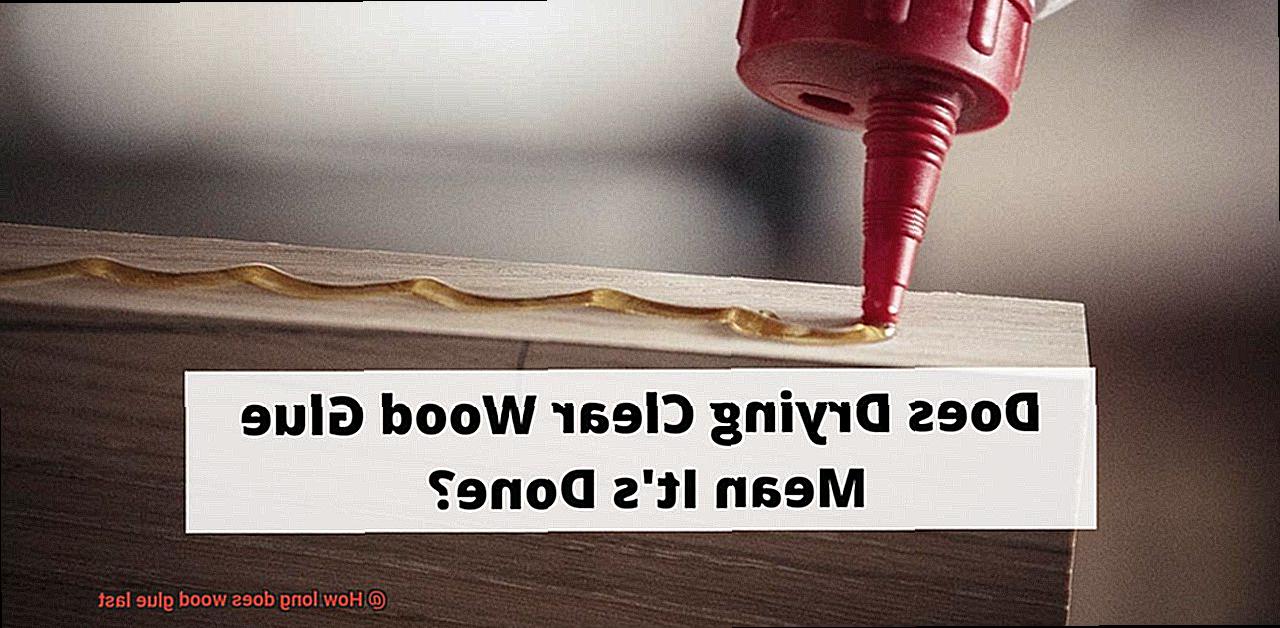
To ensure the bond’s strength, testing should be conducted before subjecting the joint to stress or load. Applying pressure or stress to the joint and assessing its resistance will determine its durability.
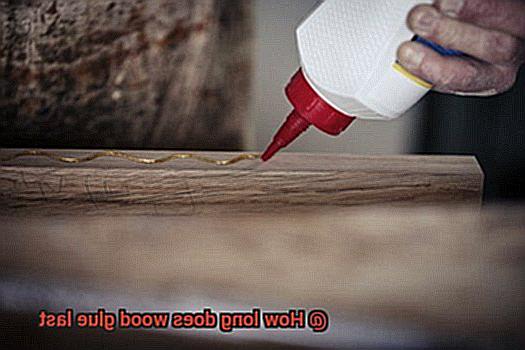
Factors Affecting the Longevity of a Wood Glue Bond
It is influenced by a myriad of factors that can either strengthen or weaken its hold. Let us delve into the intricate world of wood gluing and explore the elements that shape the endurance of this bond.
Temperature, like a fickle mistress, can sway the strength of a bond. In extreme heat, the glue softens, losing its grip on the wood. Conversely, in frigid conditions, it becomes brittle and fragile. Following the manufacturer’s guidelines regarding temperature ranges ensures optimal bonding.
Humidity, a silent adversary, can interfere with the drying process of certain glues. High humidity levels hinder the glue’s ability to set properly, resulting in a feeble bond. Ventilation and adherence to recommended humidity ranges are vital during drying.
The type of glue chosen determines the bond’s resilience. PVA glue, renowned for its initial strength, may weaken over time when exposed to moisture. Epoxy glue, on the other hand, offers an unwavering and durable bond resistant to temperature fluctuations and moisture.
Surface preparation lies at the heart of any successful bond. Clean, dry surfaces free from contaminants such as dust or grease facilitate better adhesion. A meticulous sanding and smoothing process enhances the connection between wood and glue.
Applying clamping pressure while the glue cures is essential for a robust bond. This pressure squeezes out excess glue and maximizes contact between wooden surfaces. The duration of clamping time varies based on the type of glue but typically spans 30 minutes to an hour.
Moisture plays a crucial role in determining the longevity of a bond. Different glues react differently to moisture exposure. PVA glue dissolves in water and fares poorly in wet environments. In contrast, epoxy and polyurethane glues exhibit greater resistance to moisture, ensuring a bond that endures.
The age and quality of glue also impact its longevity. Expired glue weakens the bond, rendering it less reliable. Storing glue correctly and using high-quality brands guarantee the strength and durability of the bond.
Natural Wood Expansion and Contraction
Natural wood expansion and contraction is a fascinating phenomenon that all woodworkers and craftsmen should be aware of. It is a crucial factor to consider when using wood glue, as it can greatly impact the strength and longevity of bonded joints.
Wood, being a hygroscopic material, has the ability to absorb and release moisture from its surrounding environment. As the moisture content in the wood changes, so does its size and shape. When wood absorbs moisture, it swells and expands. Conversely, when it loses moisture, it contracts and shrinks. This natural movement of wood can exert stress on the bond created by wood glue.
To prevent joint failure and ensure a strong bond, it is important to choose the right type of wood glue for your project based on anticipated wood movement. Different wood glues have varying degrees of flexibility, so selecting one that can accommodate the expected expansion and contraction of the wood is crucial. Glue manufacturers often take into consideration this natural movement of wood when formulating their products, making them somewhat flexible.
In addition to choosing the right glue, it is important to consider environmental conditions. Factors like humidity and temperature greatly influence wood movement. By accounting for these conditions, you can anticipate how much the wood will expand or contract and choose the most suitable glue accordingly.
Proper joinery techniques are also essential in accommodating wood movement. Floating joints or leaving small gaps between boards can relieve stress on the glue bond and prevent joint failure.
By understanding and accounting for natural wood expansion and contraction, you can achieve stronger, more durable glue bonds. This is especially important for projects like outdoor furniture or flooring installations, where exposure to varying environmental conditions is common.
To ensure success in your wood glue projects, remember to choose the right type of glue for your project based on anticipated wood movement. Prepare surfaces properly by ensuring they are clean, dry, and free from any contaminants. Apply an even layer of glue on both surfaces to ensure a strong bond. Use adequate clamping pressure to ensure proper contact between the glued surfaces. Allow sufficient drying time for the glue to fully cure before subjecting it to stress or load. Lastly, regularly inspect and maintain glued joints to identify any potential issues early on.
Environmental Factors That Can Weaken the Bond Over Time
Wood glue is a versatile adhesive widely used in woodworking projects for its strong bond. However, over time, this bond can weaken due to various environmental factors. Understanding these factors is crucial for maintaining the integrity and longevity of glued wood joints. Let’s explore the key environmental factors that can weaken the bond over time.
- Temperature and Humidity: Extreme temperatures, both hot and cold, can affect the strength of wood glue. High temperatures can cause the glue to soften and weaken, while low temperatures can make it brittle. Similarly, high humidity levels can interfere with the curing process of the glue, leading to a weaker bond. To ensure optimal performance, it is important to work within recommended temperature and humidity ranges.
- UV Exposure: Sunlight contains ultraviolet (UV) radiation that can degrade wood glue over time. The UV rays break down the chemical structure of the adhesive, causing it to lose its bonding properties. This is particularly relevant for outdoor projects where glued wooden surfaces are exposed to direct sunlight for extended periods. To protect against UV degradation, using UV-resistant wood glues or applying a protective finish over the glued joints is recommended.
- Moisture and Water Exposure: While some wood glues are water-resistant, prolonged exposure to moisture or immersion in water can compromise the bond. Standard wood glues are not designed for waterproof applications, so it is important to use waterproof or water-resistant wood glues when working on projects that may come into contact with water.
- Chemical Exposure: Wood glues are generally resistant to mild chemicals encountered in everyday use. However, exposure to strong solvents or harsh chemicals can deteriorate the bond. In environments where chemical exposure is likely, such as workshops with volatile substances, it is crucial to choose a wood glue that is specifically formulated for chemical resistance.
- Aging: Over time, even under ideal environmental conditions, wood glue bonds can naturally degrade due to aging processes. The duration of the bond’s effectiveness depends on factors such as the type of wood glue used, quality of application, and specific environmental conditions. Regular inspection and maintenance of glued wood joints can help identify any signs of degradation and prompt necessary repairs or reinforcement.
Structural Movement Impacting the Bond
Structural movement impacting the bond is a phenomenon that occurs when wood undergoes natural shifting, expanding, and contracting due to changes in temperature and humidity. This movement can have a significant impact on the bond created by wood glue, potentially leading to failure if not properly addressed.
Changes in moisture content play a crucial role in structural movement. As wood absorbs moisture, it swells, and as it loses moisture, it shrinks. This movement can cause the wood to warp, twist, or crack, exerting stress on the glue joint. In addition to moisture, temperature fluctuations also contribute to structural movement. Wood expands with heat and contracts with cold temperatures, further straining the bond.
Different types of wood exhibit varying degrees of natural movement. Softwoods like pine tend to have more noticeable movement compared to hardwoods like oak. Therefore, the type of wood being glued together can influence how long the bond will last under structural movement.
The quality and type of wood glue used are also crucial factors impacting its ability to withstand structural movement. High-quality wood glues are specifically formulated to be more flexible and possess superior adhesion properties, allowing them to withstand the stresses caused by structural movement for longer periods. Proper application techniques, such as ensuring clean and dry surfaces before applying the glue, also enhance its durability.
Despite being designed to create a strong bond, wood glue is not immune to the effects of structural movement over time. Repeated cycles of expansion and contraction weaken the bond, eventually leading to failure. The duration that wood glue can withstand structural movement varies depending on factors such as wood type, glue quality, and environmental conditions.
To mitigate the impact of structural movement on the bond, some woodworkers employ additional reinforcement methods. Mechanical fasteners or joinery techniques like dowels or biscuits help distribute the stresses caused by structural movement and provide extra strength to the joint.
gnG0FNxisvk” >
Conclusion
Wood glue, like any adhesive, has a limited shelf life. The longevity of wood glue depends on various factors such as storage conditions and the type of glue used. On average, most wood glues have a shelf life of one to two years. However, some high-quality wood glues can last up to five years if stored properly.
Proper storage is crucial for extending the lifespan of wood glue. It should be kept in a cool and dry place away from direct sunlight or extreme temperatures. Moisture and heat can degrade the adhesive properties of the glue, rendering it ineffective.
Additionally, it is essential to tightly seal the container after each use to prevent air exposure. Oxygen can cause the glue to thicken or harden over time, making it unusable. Therefore, ensuring a tight seal will help maintain its effectiveness for longer periods.
When using wood glue that is past its expiration date, it may not bond as effectively as fresh glue. The strength and durability of the bond may be compromised, leading to potential issues with your woodworking projects. To ensure optimal results, it’s best to use fresh wood glue within its recommended shelf life.
In conclusion, while wood glue can last for one to two years on average, proper storage and usage play a significant role in maintaining its effectiveness.

